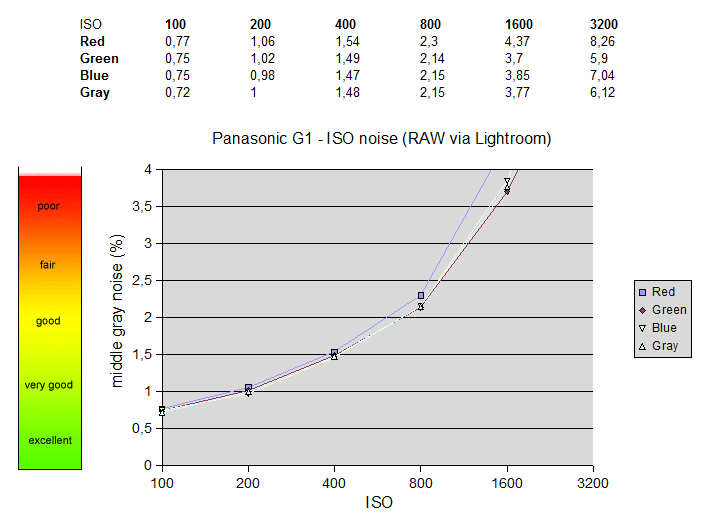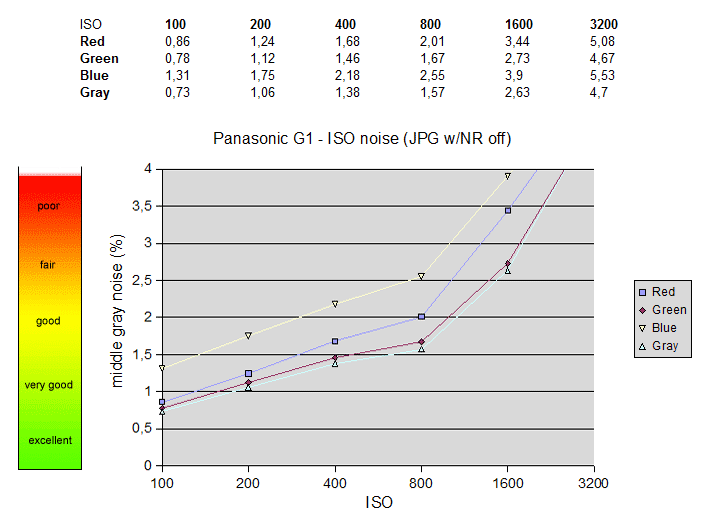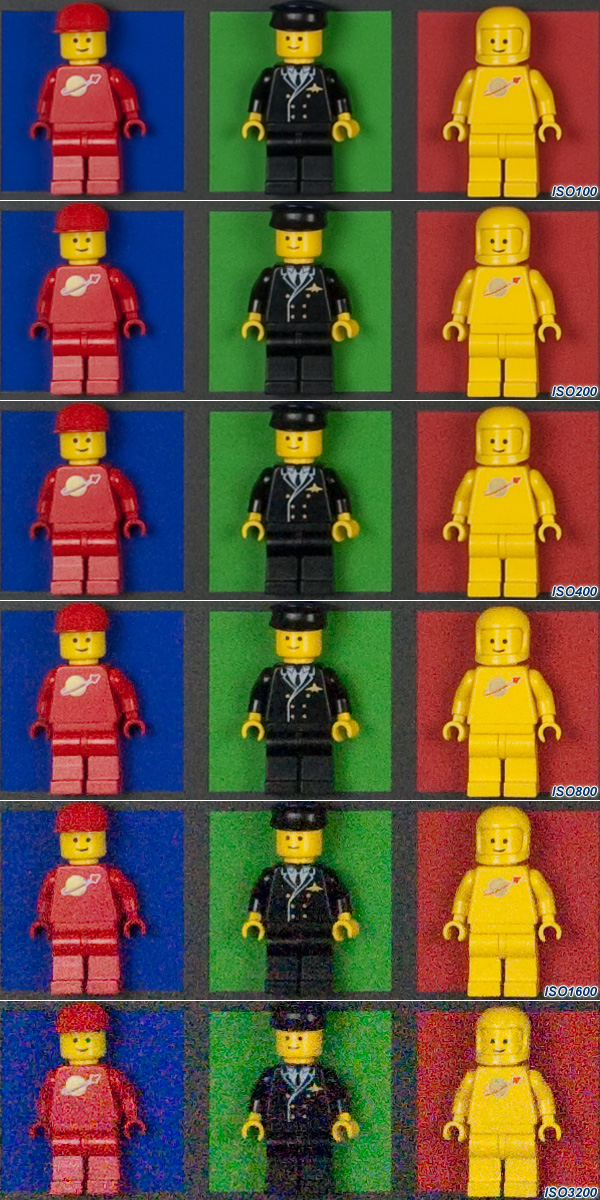|
Panasonic DMC-G1 - Review / Test Report - Technical Analysis II |
|
DSLR Reviews -
DSLRs
|
|
Page 4 of 7
ISO noise
Let's have a look at the impact of the small, 17.3 x 13.0mm Live Mos Sensor on the ISO performance now. Here're the results for RAW converted images:

Regarding its noise characteristic the G1 is a decent performer, but it suffers a little at high ISO settings
due the comparatively small four-thirds sensor dimensions (vs APS-C) DSLRs. Unsurprisingly there's nothing to
worry about between ISO 100 and ISO 400. At ISO 800 the noise level increases quite a bit, but with a little
post processing the setting remains usable. ISO 1600 is way over the edge and should be avoided, not to mention ISO 3200.
Let's check the JPEG results now ...
If you move your mouse cursor over the image you can switch the corresponding JPEG results, Noise reduction ON and OFF

The JPEG output shows comparatively less noise than the converted RAW files, but the increasing noise reduction towards high ISO settings comes at cost of resolution and dynamic range - specifically at high ISO settings. The decrease of the measured noise at
ISO 800 does probably originate in the more blotchy (coarse) noise characteristic - visually ISO 800 images are clearly
worse compared to ISO 400. The rather low figures overshadow the fact that ISO 1600 remains plain bad for serious photographic purposes.
The ISO performance needs to be seen within the context of the system. The four-thirds system has a 2x magnification
ratio compared to full format DSLRs. In other words - it has a bigger depth-of-field at the same field-of-view equivalent to about
~2 f-stops. So in order to achieve the same depth-of-field as a full format DSLR you can shoot about 2 f-stops faster (e.g. 14mm f/4
on the G1 is equivalent to 18mm f/5.6 on a Canon EOS 50D (APS-C) or 28mm f/8 on an Nikon D700 (full-format)). Thus ISO 400 on a four-thirds DSLR is equivalent to ISO 1600 on FF DSLRs or ISO 800 on APS-C DSLRs (roughly). That is, naturally, assuming that you've fast enough
lenses to play the game.
These are the lab results but I guess you're also interested in some samples taken in the real world. The first image series should give
you an idea of the color noise at the specific settings.
If you move your mouse cursor over the image you can switch the the corresponding JPEG results

... and another series with a more detailed subject.
If you move your mouse cursor over the image you can switch the the corresponding JPEG results

Verdict:
 | low ISO noise (ISO 100-200):
 |
 | mid ISO noise (ISO 400-800):
 |
 | high ISO noise (ISO 1600-3200):
 |
|